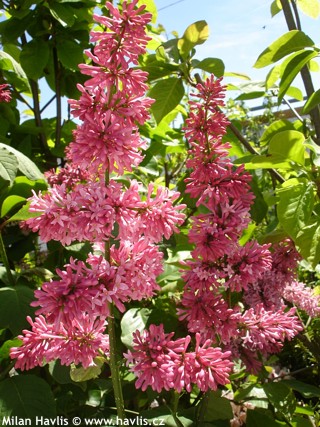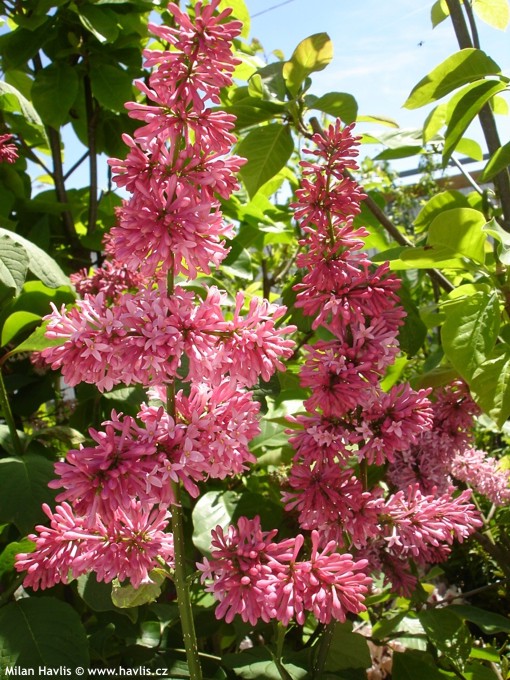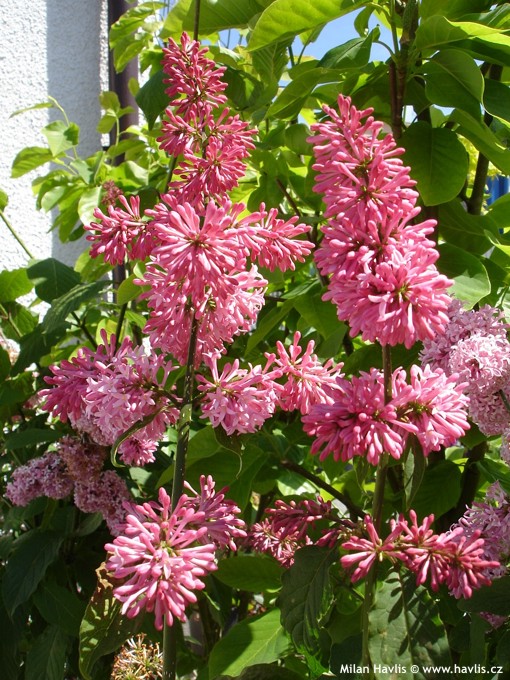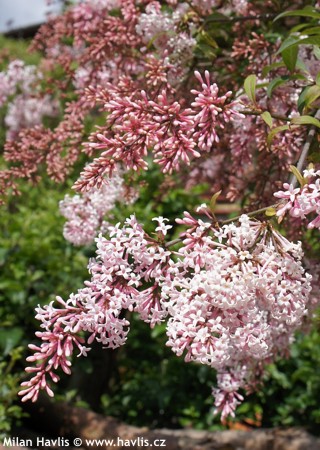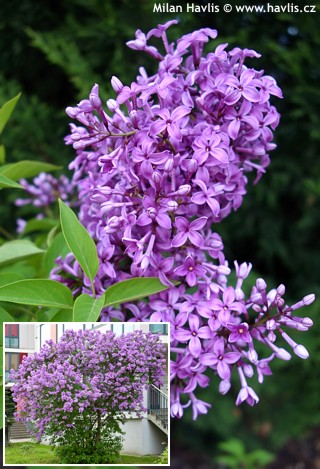Syringa x 'JAMES MacFARLANE' Canadian lilac, Preston lilac
Syringa
Lilacs are common and reliable shrubs of our climate. So it is clear that we will not offer you something that can be seen at every corner, but speciality plants that look a bit different and bring something extraordinary to your beautiful garden.
James MacFarlane is a popular variety of a Canadian lilac. It has salmon pink to bright pink flowers, formed in clusters where individual tubular flowers hang down from the main stalk whereas the panicle sits upright on the shrub. They have a sweet scent. The difference between these and common lilacs is that panicles of Canadian lilac are not as clustered as on common lilac, flower 2-3 weeks later and thanks to the open flowers they make a nice and relaxed appearance on the first hot summer days.
Lance-shaped leaves are 6-12 cm long, deciduous, deep green and glossy. These lilacs do not make suckers, they are not weedy unless grafted on common lilac. Growing slower than common lilac they can be used as substitutes in areas where tall shrub would be a problem. Pruning is usually not recommended but if you need to trim or re-juvenile the plant do so immediately after flowering. Deadheading will increase number of flowers for the following year.
Canadian lilacs come from several hybridizing of syringa reflexa and syringa villosa, plus other varieties. The first one was bred by Isabella Preston from Ottawa, Canada, in 1920´s and the result was a beautiful and extremely hardy shrub. Others followed later. According to the latest terminology they are now called only “syringa x” (or just “syringa”) removing “x prestoniae” followed by variety name.
Lilacs can be grown in many soil types. For best result use reasonably fertile, moist but well-drained soil, preferably neutral or alkaline. Full sun for profuse flowering. Fully hardy to -45°C (USDA zone 2).
Last update 12-12-2008; 05-02-2012

































